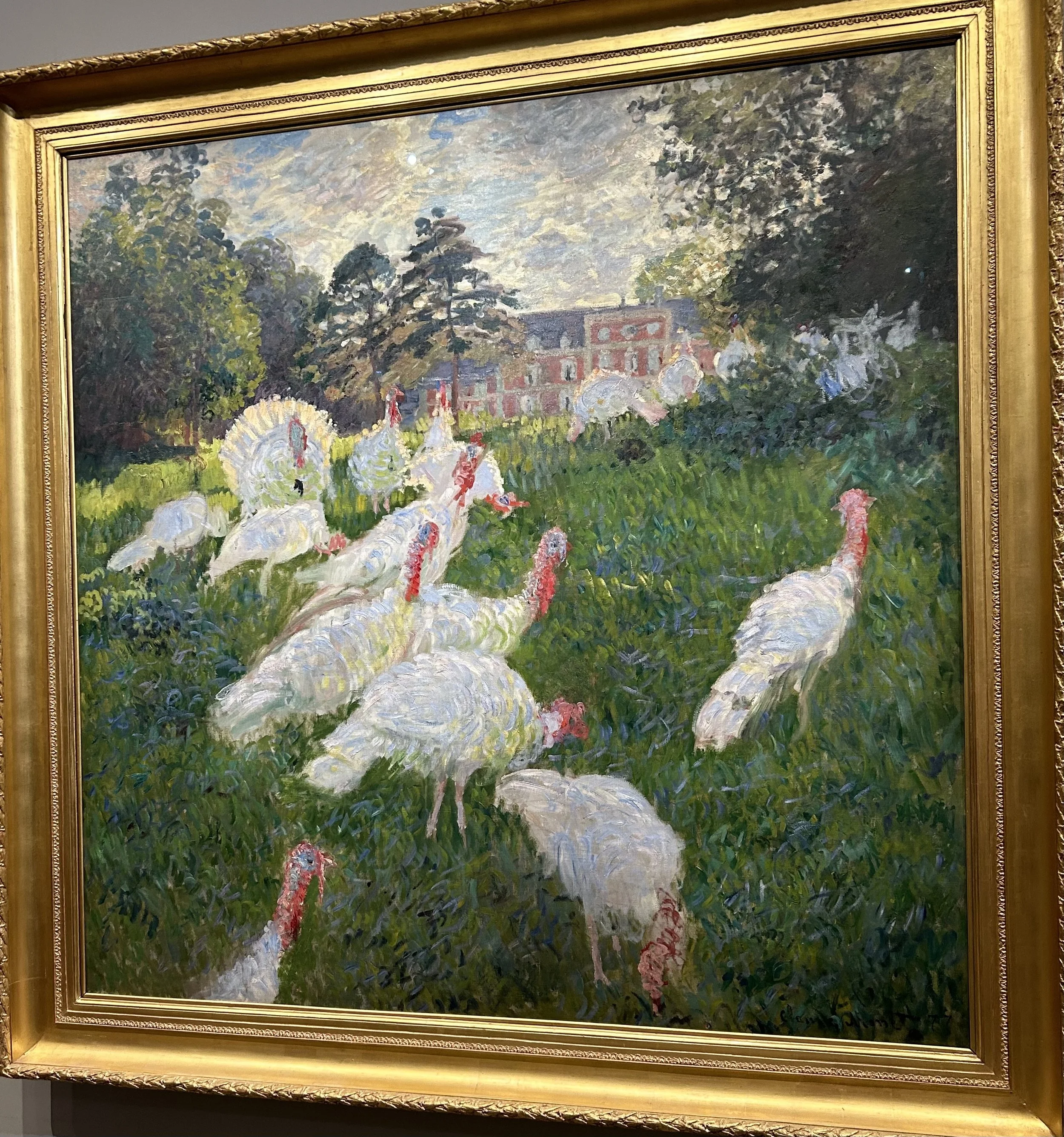Navajo Fry Bread
The Turkeys by Monet—Musée d’Orsay
This recipe is from the More with Less cookbook. I used it all the time for bread recipes in Uganda. It was hard to always be creative, so we had a lot of the same thing, BUT Navajo Fry Bread was such a fun way to mix things up. It’s great any time of year with rice, corn, beans or southwestern fare. This year, I have decided to have Navajo Fry Bread for Thanksgiving. It is a symbol of oppression and of resilience because this is what they ate on the Trail of Tears.
In September and October, I usually begin the descent towards Thanksgiving and am thoughtful about the menu. It takes a lot of planning and scheming. I have had the privilege of having a Thanksgiving meal on 3 continents, even though it is an American concept and holiday. However, I found out in England when we were in school with Canadians, they also celebrate, however on the wrong day. Just kidding. Their Thanksgiving is always the second Monday in October and so, they have already had theirs whereas in the USA, we celebrate ours on the fourth Thursday in November. We share so many commonalities with Canada as former colonies, complicated and tragic histories of European and Indigenous contact and interaction, so Thanksgiving has meant different things over the years as more and more historical analysis comes out. One thing remains though, the concept is still amazing. We had so much fun sharing stories and traditions with our friends in England who do not celebrate Thanksgiving nor had they really known much about it. We were able to gather people from different nations, cook and bake traditional dishes which include turkey for the main dish and lots of autumnal side dishes and pumpkin pie for dessert which none of them had ever had. It was very special. They loved the idea of having a meal and holiday surrounding just giving thanks. Setting time aside for gratitude remains significant even though there was also a price paid for that holiday. There we were, descendants of the former colonized and colonizers together at the same table. Amazing
In Uganda, we experienced the same thing. The Ugandans could share the colonial past with the British. It was very interesting getting ready for the meal in Uganda. They don’t have turkeys all the time, but it was told to me at Christmas they do because so many British and Europeans will eat turkey at Christmas. I was also told that 2 days before Thanksgiving, some Ugandan herders would bring turkeys down the road and you can order one. I am from the suburbs in America where you can count on a frozen turkey all year long, and I could NOT switch gears to a FRESH turkey and plus, I did not have the skills. Can you imagine that I had to order 2 turkeys from Kenya?? My thrifty German neighbor was amused and promised me the next year he could deal with the fresh turkey because he grew up on a farm and knows how to do that. I just could never adjust because what if the herders didn’t come or other unplanned problems? I want to be a farm girl, but alas, I am a super American suburbanite. I always stuck with the overpriced but surety of the frozen Kenyan turkeys!! There we were, descendants of the former colonized with the descendants of former colonizers. We came from Germany, Ireland, UK, Congo, Rwanda, America and Uganda and shared dishes most had never heard of but we gathered around the fact that we all have things to be thankful for, even in the midst of suffering. Our dog went nuts over the leftover turkey bones—yes, we gave our dog real bones there. She knew how to handle them.
I hit a memory pocket with the Navajo Fry Bread because as I get older and meet more people from around the country including some Lumbee from North Carolina, I realize that the American Thanksgiving menu is not all the same, nor is the story. There is a HUGE variety of items on the American table depending on heritage and region of the country! Each family brings their own tradition, and even common dishes like stuffing or sweet potatoes might have more or less butter and sugar depending on if you are in the South or other parts of the country. I am from the south, so you better believe there is a lot of butter and brown sugar on our veggies! I love our country and I love that at Thanksgiving we CAN come together to honor, remember, and give thanks to God for His mercy and grace despite differences and despite the hard parts of our past. I am rooting for this great Republic experiment!






